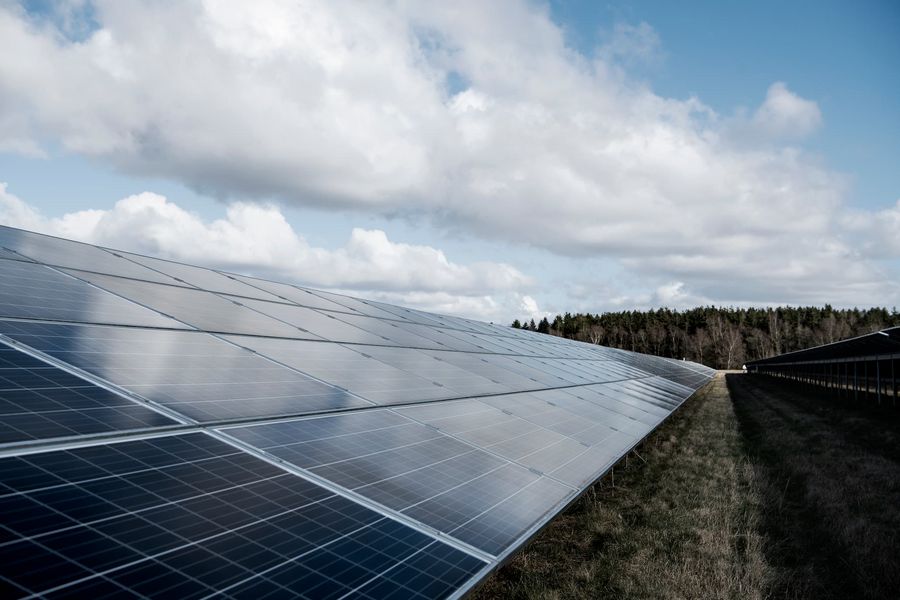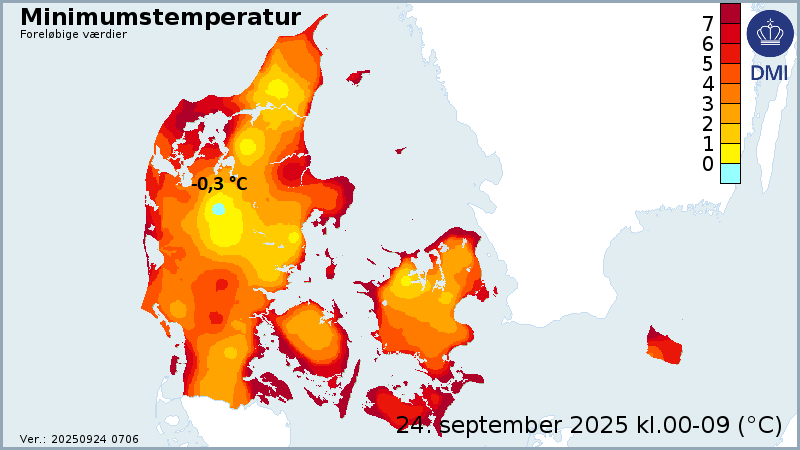Satellite-based solar forecasts to provide a cheaper and more reliable electricity supply
The Danish Meteorological Institute (DMI) and Energinet have just entered into a cooperation agreement that will help lower electricity bills and strengthen security of supply across Denmark. Frequent solar forecasts for individual solar parks – generated using satellite imagery and AI methods – will deliver more precise predictions of power production.

28. august 2025.
Predicting cloud cover over solar parks every 10 minutes means we can all benefit from a cheaper and more reliable electricity supply, and that is exactly what DMI can deliver. These more frequent and accurate forecasts will make it easier for Energinet to balance the national electricity grid in the future.
Energinet is the agency responsible for ensuring that power reaches households and businesses across Denmark.
This is the essence of a new cooperation agreement between DMI and Energinet.
Renewable energy creates imbalances in the grid
As renewable energy continues to account for a growing share of Denmark’s total power production, the cost of balancing the grid increases. This makes frequent short-term solar forecasts increasingly relevant. Today, Energinet receives updated weather forecasts every three hours, but this project will eventually provide updates every 10 minutes.
“This collaboration on making the most of solar energy is possible because DMI is both a national weather authority and a research institute. We are pleased to contribute to the green transition with more precise weather data, and we foresee growing demand for other open and green data as well,” says Marianne Thyrring, Director of the Danish Meteorological Institute.
By using more frequent solar forecasts from DMI, Energinet will be better able to predict the scale of imbalances that constantly occur in an energy system primarily based on wind and solar. With more precise forecasts, Energinet can operate and balance the electricity grid more effectively.
“For us, this collaboration is about looking ahead – and what we see is a power grid facing greater risks of imbalance than today. If we do nothing, the cost of balancing the grid will rise and, in the worst case, threaten Denmark’s high level of security of supply. That is why I look forward to working with DMI on much more frequent and accurate solar forecasts,” says Jesper Abildgaard Nielsen, Director of Digital Products and Business Development at Energinet.
The first satellite-based measurements are expected to be delivered to Energinet in early 2026.
- The cooperation agreement is a joint development project and goes into effect on 1 October 2025.
- Energinet is an independent public enterprise under the Danish Ministry of Climate, Energy and Utilities. It owns and operates the national electricity grid and ensures security of supply. DMI is an agency and research institute under the same ministry.
- The project builds on DMI’s existing research and development in satellite-based solar forecasting.
- In March, April, May, and June 2025, Energinet spent approximately DKK 400 million on balancing the electricity grid.
- The costs of balancing the grid are paid by producers who create imbalances by generating more or less electricity than forecast. Although producers are billed directly, these costs are ultimately passed on to consumers. Better forecasts will therefore benefit Energinet, producers, and electricity consumers alike, providing a cheaper and more reliable electricity supply.
- The tool for satellite-based solar forecasts is open source and will be made available across Europe including to private companies.






